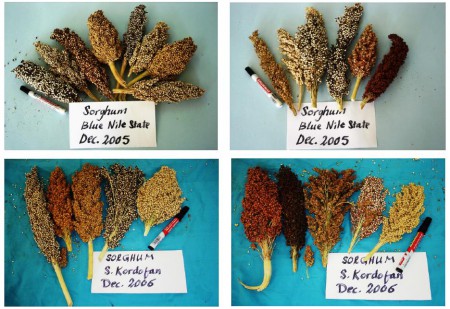- The Farnsworth Professor of International Agricultural Policy (Emeritus) and Deputy Director, Center on Food Security and the Environment, Stanford University talks about the drought on his Iowa farm.
- While Ted offers 11 talks on the transformative power of vegetables.
- A new use for urban bees; protecting the lead on church roofs.
- “Agricultural researchers in developing countries are keen to communicate their research …” Scidev.net communicates.
- Growing a high-value crop instead of a staple is not resilience.
- Growing mushrooms in a laundry basket might well be.
- Growing breadfruit absolutely requires some simple processing tools if it is to be.
- Speaking of growth, Jeremy abuses his position of power to direct you to Eight Fallacies about Growth
- HarvestChoice grapples with the nomenklatura problem; which genius came up with SPAM?
- The Christian Science Monitor reports that orphan crops will be the saviour of African agriculture. Again.
- ABC (Oz) fears that war will destroy the ICARDA genebank, forgetting all about that Doomsday vault.
Nibbles: Genebanks, Grasses, Traditional Diets, Cuba, Hominid diets, Drought, Polluted bison, Chinese research, Turkeys
- Luigi thumps his tub, again: genebanks are important.
- Studiously avoiding turf-war truisms, grass species exhibit diverse drought tolerance.
- “Honor the Gift of Food,” to diversify diet in line with ancient practices.
- “I do not believe any president in the world has been so intimately involved with the problem of food production is his country, or with such paltry results.” You’ll never guess who. Or what his brother is up to.
- “The problem is not so much the drought but our over-reliance on this single crop.” Diversify, young person.
- Cattle genes make for smaller bison.
- Chinese money makes for new ag research station in Mali.
- Give thanks: turkeys domesticated 1000 years earlier than previously thought.
Sudanese sorghum by the numbers
The Plant Genetic Resources Unit of the Agricultural Research Corporation (ARC) of Sudan has just published a catalog of its sorghum collection. It mainly contains reams of characterization data, which of course will be easier to explore in their digital form, but it’s always good to have illustrations to go with the numbers. Would be great to see the data eventually make their way to Genesys.

Nibbles: Taxonomic search, Genebanks in China, USA, Nepal, Scaling up, Bison
- Discover taxonomic names in files, websites, etc…
- Chinese genebank collecting wild species in Tibet.
- Touring a non-government genebank. And running another one.
- Not a community one, though.
- Everybody talking about scaling up. Here’s how you do it. Probably need the media involved, right?
- Scaling up did for the bison.
The CGIAR reform explained
Frank Rijsberman, CEO of the CGIAR Consortium, gave a seminar at IFPRI yesterday on the topic of the CGIAR reform. You can watch it below, but if you want to see the slides properly, you’ll have to go somewhere else. I wonder if there’s a way to intercut the video with still shots of the slides.
You may be intrigued by the statement that the CGIAR now has “15 (+1) programs.” The details are on the CGIAR Consortium and CGIAR Fund websites, though, confusingly, you get different sorts of details in the two places. Anyway, the research portfolio is perhaps most succinctly summarized here. The 15 things Dr Rijsberman referred to are the so-called CGIAR Research Programs (CRP). The “(+1)” refers to the “Long Term Support of CGIAR Genebanks,” 1 which is somewhat different, being described as a “CRP Research Support Program.” I’m not sure that it’s entirely appropriate to relegate what are often described as the crown jewels of the CGIAR system to a bracketed addendum, but we shouldn’t quibble. It’s certainly very good to see some of the world’s most important genebanks properly taken care of.